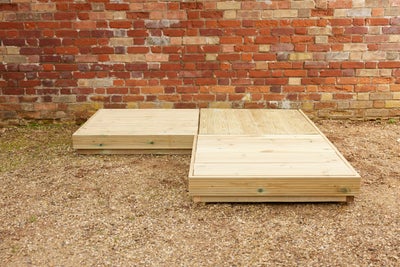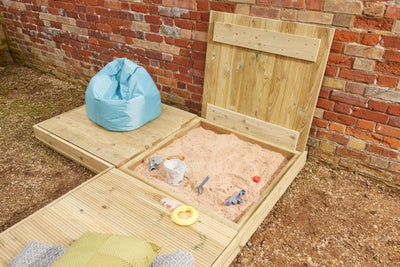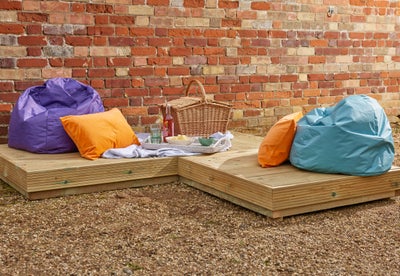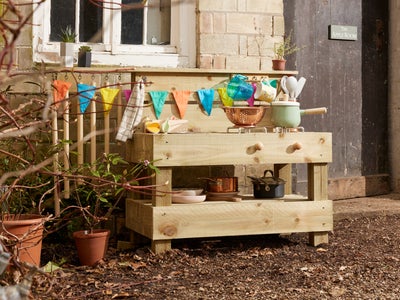DIY modular decking with hidden sandpit
Planning & preparation
- We are going to show you how to build a decking sandpit, step by step.
- It gives you a space that can be utilised by both parents and children alike, with a convertible design.
- The modular design lets you expand it to suit your space, so you can go as big or as small as your garden allows.
- When it comes to the design and size of your sandpit, it’s up to you. We’re showing you how to build one module, but everything can be changed to suit your needs.
- It should take a DIYer with moderate experience around an hour to build one module.
- Follow our cutting list to copy the design in this guide.
Staying safe
- Always make sure that your power tools are unplugged while you’re setting them up or changing accessories, to ensure your safety.
- Keeping the plug in-sight acts as a visual reminder to prevent accidents and hazards.
- For extra safety when using power tools and painting, be sure to wear protective equipment, including your ear defenders, goggles and dust mask.
Deciding on size and design
The size of one of your modules is dictated by your
paving slabs, which provide the base for your sandpit.
We used four 450mm by 450mm squares to create a larger square, which when combined with the 50mm width of our
timber, gave us a one-metre by one-metre module.
Work out what the size of your one module will be, and then use this to figure out the overall scale of your decking when you consider how many modules you want to combine.
You’ll also need to think about which modules will house your sandpit and how big you want to make it. Thanks to its modular nature, you can build all the components in your shed, garage or workshop and then construct them at the final location.
Building your frame
View instructions
Constructing your deck
View instructions
Finishing touches
View instructions
For more ideas, advice and DIY how-to guides, visit the inspiration hub; and share your #WithWickes project with us online.






